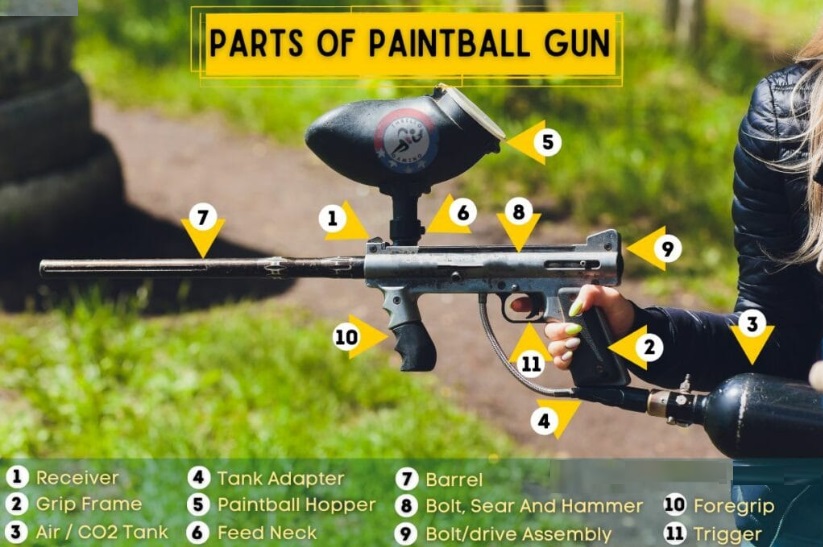In the dynamic world of paintball and airsoft, understanding the nuances of your equipment can significantly enhance your gaming experience. Two critical aspects that often puzzle enthusiasts are the impact of temperature on CO2 and High-Pressure Air (HPA) systems and the essential maintenance practices for gas tanks. This article delves into these topics, offering insights to optimize both performance and the lifespan of your airsoft and paintball gas tanks.
Temperature Effects on CO2 and HPA Systems
The performance of CO2 and HPA systems in paintball and airsoft guns is notably influenced by temperature, owing to the fundamental physics of gases. CO2, a widely used propellant, is highly sensitive to temperature fluctuations. As the temperature rises, CO2 expands, increasing the pressure inside the tank. This results in higher muzzle velocity but can also lead to inconsistencies in shots and, in extreme cases, damage to the gun if the pressure exceeds the equipment’s design limits. Conversely, in colder environments, CO2 contracts, reducing pressure and consequently, the power and consistency of shots.
HPA systems, on the other hand, are generally more stable across a range of temperatures. HPA tanks store compressed air, which is less susceptible to temperature-induced pressure changes than CO2. This stability makes HPA systems a preferred choice for players seeking consistent performance regardless of weather conditions. However, even HPA systems can experience some performance variance in extreme temperatures due to changes in air density, though the impact is less pronounced compared to CO2.
Maintenance and Care for Gas Tanks
Proper maintenance and care of gas tanks are paramount for extending their service life and ensuring safety during use. Here are essential tips for maintaining your CO2 and HPA tanks:
- Regular Inspections: Check your tanks for signs of wear, corrosion, or damage before and after each use. Pay special attention to the tank‘s o-rings and replace them if they appear dry, cracked, or worn out, as they are crucial for maintaining a proper seal.
- Hydrostatic Testing: Both CO2 and HPA tanks are required to undergo hydrostatic testing periodically to ensure they can safely hold pressurized gas. The frequency of this testing is typically every five years but may vary depending on local regulations and the manufacturer’s recommendations. Always adhere to the testing schedule to prevent potential failures.
- Proper Storage: When not in use, store your gas tanks in a cool, dry place away from direct sunlight and extreme temperatures. This precaution helps prevent internal pressure fluctuations that could weaken the tank over time.
- Avoid Overfilling: Overfilling a gas tank can lead to excessive pressure, especially in CO2 tanks where temperature increases can cause rapid expansion of the gas. Always fill the tank according to the manufacturer’s specifications.
- Use a Protective Cover: Investing in a protective cover or sleeve for your tank can shield it from impacts and scratches, reducing the risk of damage that could compromise the tank’s integrity.
- Cleaning: Keep the exterior of the tank clean from dirt, paint, and debris. A clean tank is easier to inspect for damage and ensures a good connection with your gun. Avoid using harsh chemicals that could corrode the tank or affect the seals.
By understanding the temperature-related behavior of CO2 and HPA systems and adhering to a comprehensive maintenance regimen, players can significantly improve the performance and longevity of their airsoft and paintball gas tanks. These practices not only enhance the gaming experience but also contribute to the safety and reliability of the equipment, ensuring countless hours of uninterrupted fun on the field.
Post time: Feb-26-2024

